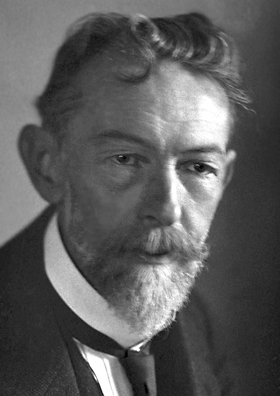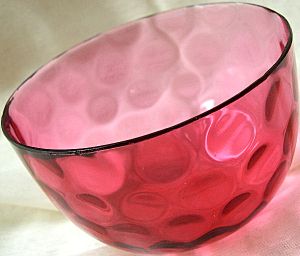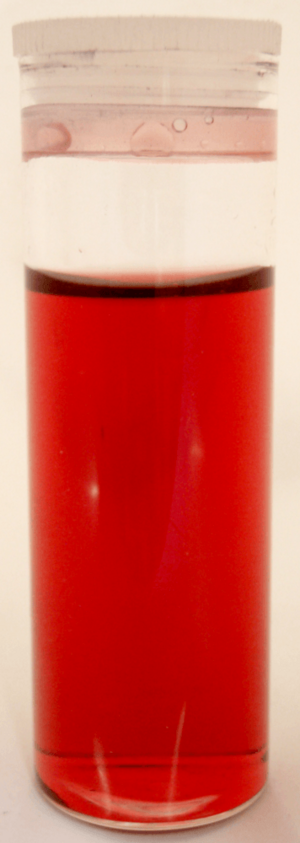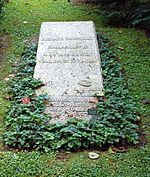Richard Adolf Zsigmondy facts for kids
Quick facts for kids
Richard Adolf Zsigmondy
|
|
|---|---|
 |
|
| Born | 1 April 1865 |
| Died | 23 September 1929 (aged 64) |
| Nationality | Austrian |
| Alma mater | Technical University of Vienna University of Munich |
| Spouse(s) | Laura Luise Müller |
| Children | 2 |
| Parents |
|
| Relatives | Frigyes Schulek (cousin) Dénes Zsigmondy |
| Awards | Nobel Prize in Chemistry (1925) |
| Scientific career | |
| Fields | Chemistry |
| Institutions | University of Vienna Technical University of Vienna University of Munich Graz University of Technology University of Göttingen |
| Doctoral advisor | Wilhelm von Miller |
| Influenced | August Kundt |
Richard Adolf Zsigmondy (Hungarian: Zsigmondy Richárd Adolf; 1 April 1865 – 23 September 1929) was an Austrian-born chemist. He is famous for his work with colloids. Colloids are tiny particles spread throughout another substance, like milk (fat particles in water) or fog (water droplets in air).
For his amazing discoveries about colloids, he won the Nobel Prize in Chemistry in 1925. He also helped create a special microscope called the slit-ultramicroscope. This microscope allowed scientists to see very tiny particles. The Zsigmondy crater on the Moon is named after him.
Contents
Richard Zsigmondy's Life Story
Growing Up and Early Education
Richard Zsigmondy was born in Vienna, which was part of the Austrian Empire at the time. His family was from Hungary. His mother, Irma Szakmáry, was a poet. His father, Adolf Zsigmondy Sr., was a scientist who invented tools for dentists.
Richard's father passed away when Richard was young, in 1880. His mother made sure he received a great education. Richard loved hobbies like climbing and mountaineering with his brothers. His older brothers, Otto and Emil, were well-known mountain climbers. His younger brother, Karl Zsigmondy, became a famous mathematician.
In high school, Richard became very interested in science, especially chemistry and physics. He even did experiments in a lab he set up at home!
He started studying medicine at the University of Vienna. But soon, he decided to focus on chemistry. He moved to the Technical University of Vienna and then to the University of Munich. There, he studied chemistry with Professor Wilhelm von Miller. Richard earned his PhD from the University of Erlangen in 1889.
Zsigmondy's Chemistry Career
Richard Zsigmondy published his first science paper in 1885. It was about how to find glycerin. In 1887, he wrote about making new colors on glass. This started a research area he worked on for 30 years!
He later joined a physics group at the University of Berlin. In 1893, he became an assistant professor at Graz University of Technology. Because he knew so much about glass and how to color it, a company called Schott Glass offered him a job in 1897.
At Schott Glass, he invented a special type of Jenaer Milchglas (a milky glass). He also researched how to make red Ruby glass. This beautiful glass gets its red color from tiny particles of gold.
Zsigmondy left Schott Glass in 1900. He stayed in Jena as a private researcher. There, he worked with the company Zeiss to develop the slit ultramicroscope. This amazing tool helped scientists see particles that were too small for regular microscopes.
In 1908, he became a professor of inorganic chemistry at the University of Göttingen. He stayed there for the rest of his career. In 1925, he won the Nobel Prize for Chemistry. This was for his important work on colloids and the special methods he used, like the ultramicroscope. He used it to study a substance called Purple of Cassius, which is a colloid of gold and tin.
While in Jena, he also worked on gold hydrosols. These are tiny gold particles spread in water. He used them to study protein solutions. In 1912, he made his microscopes even better by introducing the immersion ultramicroscope.
Richard Zsigmondy also worked with Wilhelm Bachmann to create new membrane filters in 1916. These filters are used to separate very small particles from liquids. He later transferred his patents for these filters to a company.
Richard Zsigmondy's Family Life
In 1903, Richard Zsigmondy married Laura Luise Müller. They had two daughters named Annemarie and Käthe.
Richard Zsigmondy passed away on September 23, 1929. He had retired from his university job just a few months before. He was related to the famous architect Frigyes Schulek and the violinist Dénes Zsigmondy.
Awards and Recognition
Richard Zsigmondy received many honors for his scientific work:
- He won the Nobel Prize in Chemistry in 1925 (awarded in 1926).
- He became a member of the Göttingen Academy of Sciences and Humanities in 1914.
- He was also a member of other science groups in places like Zaragoza, Austria, Valencia, and Harlem.
- He received honorary doctorates from several universities, including TU Wien (1917) and Graz University of Technology (1928).
See also
 In Spanish: Richard Zsigmondy para niños
In Spanish: Richard Zsigmondy para niños
- Gold number




